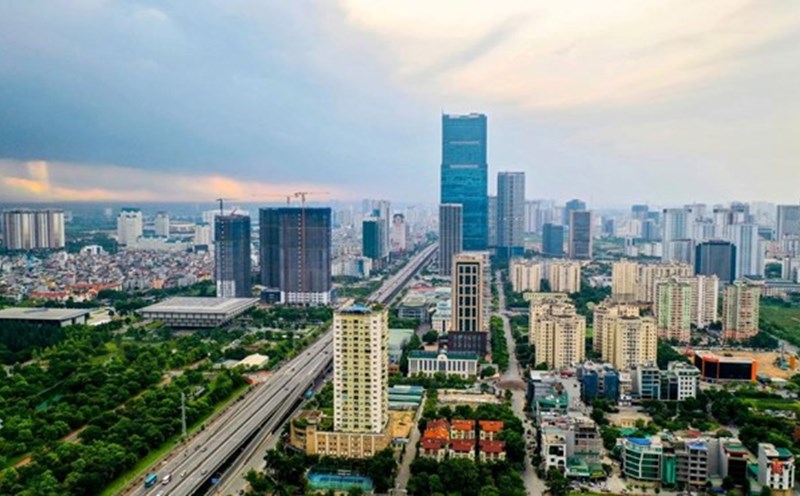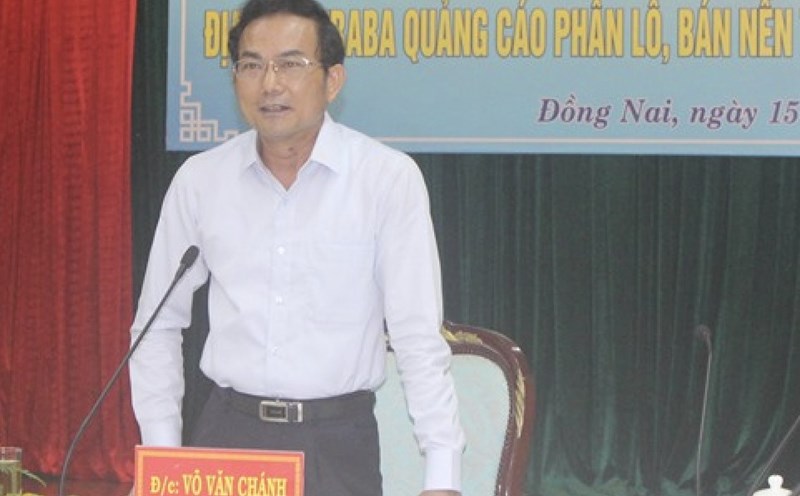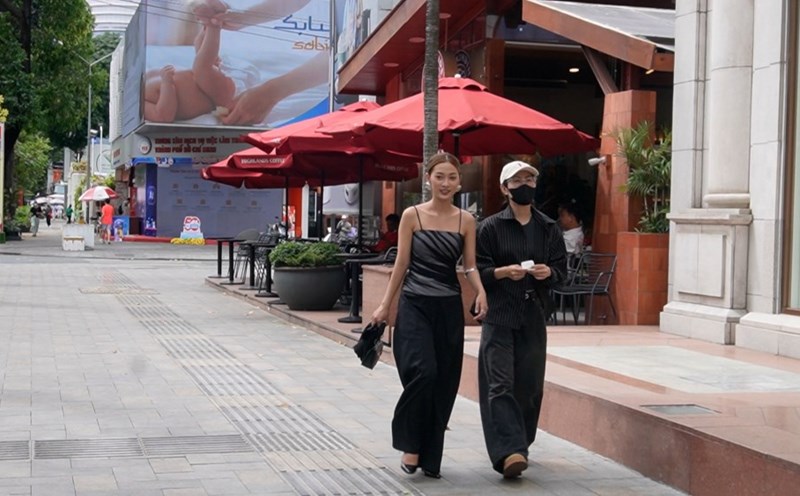Within the framework of the State visit to Vietnam, at noon on April 1, Politburo member and President Luong Cuong and his wife Nguyen Thi Minh Nguyet, King of Belgium Philippe and Queen Mathilde, visited the Thang Long Imperial Citadel, a complex of relics associated with the history of Hanoi's Thang Long Imperial Citadel.
Recognized by UNESCO as a World Cultural Heritage in 2010, the Thang Long Imperial Citadel Center is a symbol of Dai Viet's history and culture over many centuries. This was the center of power of kings through the Ly, Tran, Le So, Mac dynasties, to Le Trung Hung.
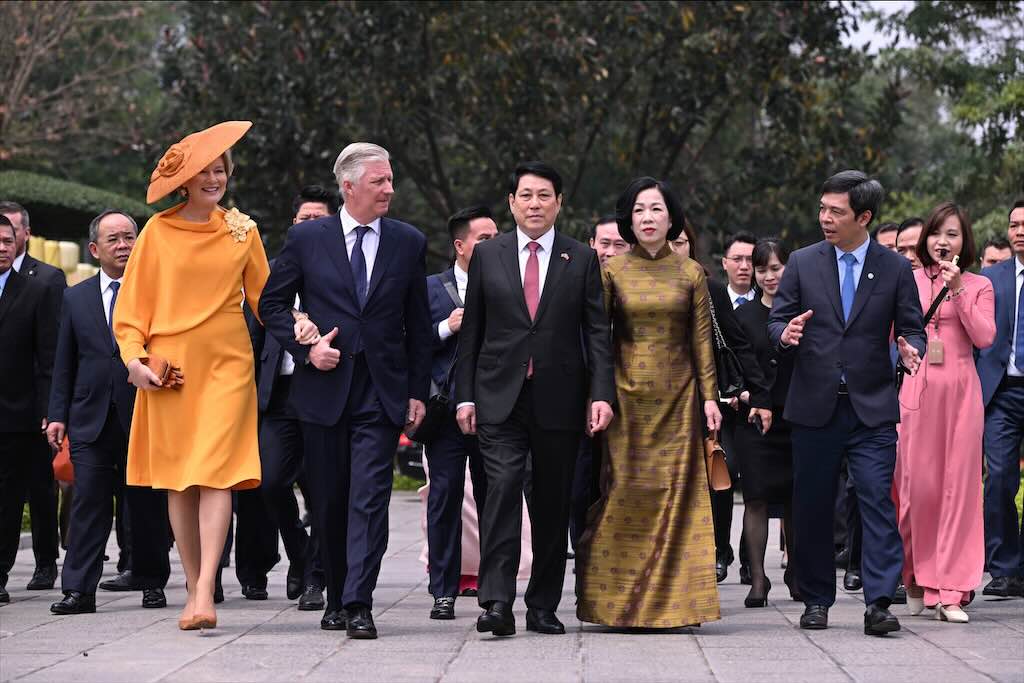
The President and his wife, the King of Belgium and the Queen, walked through Doan Mon Gate to visit the ancient cage and the stone dragoncester of Kien Kinh Thien, which still preserves many traces of the Imperial Citadel of Thang Long through historical periods.
VNA reported that the delegation also visited the Thang Long Imperial Treasury Exhibition House, which is a place to display some artifacts recognized as "National Treasures" including precious metal items, high-class ceramics made by the Thang Long Imperial palace to serve kings, queens, royals and the daily life of the royal court.
The President, his wife and distinguished guests were introduced by representatives of the Thang Long - Hanoi Heritage Conservation Center about the thousand-year history of the Vietnamese people through artifacts preserved and conserved at the Imperial Citadel Center Heritage Site, which bears the historical mark of the thousand-year-old capital.
Doan Mon Gate was originally a structure built during the Ly Dynasty, a gate that plays a very important role in the ceremonial activities of the Imperial Citadel.
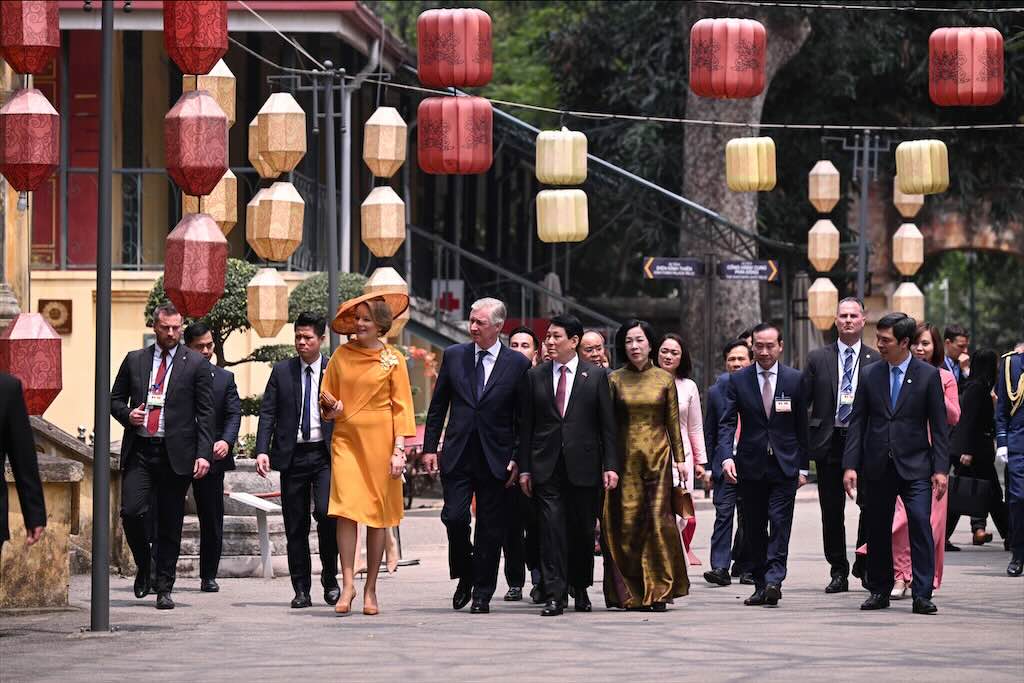
The archaeological pit was excavated with an area of 85.2 m2 right behind Doan Mon Gate; at a depth of 1.2 m, a stone border has been discovered to reinforce the foot of Doan Mon wall and the brick yard of the Le So period. At a depth of 1.9m is a section of road paved with "lemon flower" style during the Tran Dynasty, notably below are paving bricks for the Ly Dynasty road.
The President and his wife, the King of Belgium and the Queen, were also informed about the relic of the Imperial Palace, the most important place in the ancient Thang Long Fortress, the place where the most solemn ceremonies of the royal court were held, welcoming foreign ambassadors and being the place where the royal court discussed national affairs; as well as the remaining architectural works of the Imperial Palace, the old stone foundations and steps to the main hall, with the stone dragons in the palace's porch, sculpted from the 15th century, representing the highest art of sculpture during the Le So era.
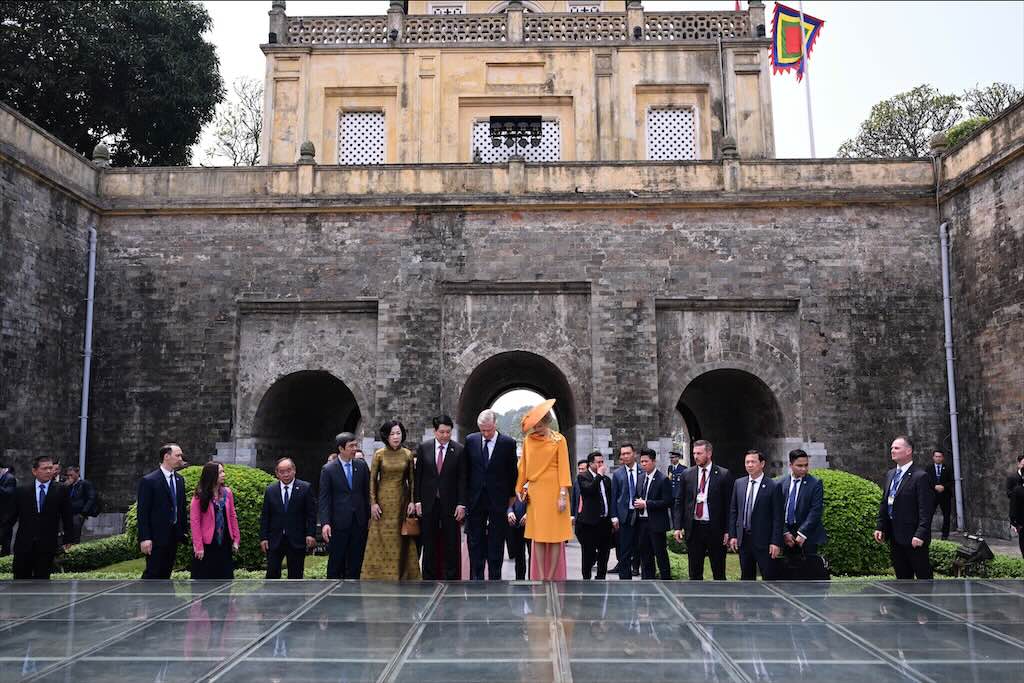
The King of Belgium and the Queen expressed their impression of the profound cultural and historical values that the Imperial Citadel of Thang Long brought, while emphasizing the importance of preserving and promoting the cultural heritage values of each nation.
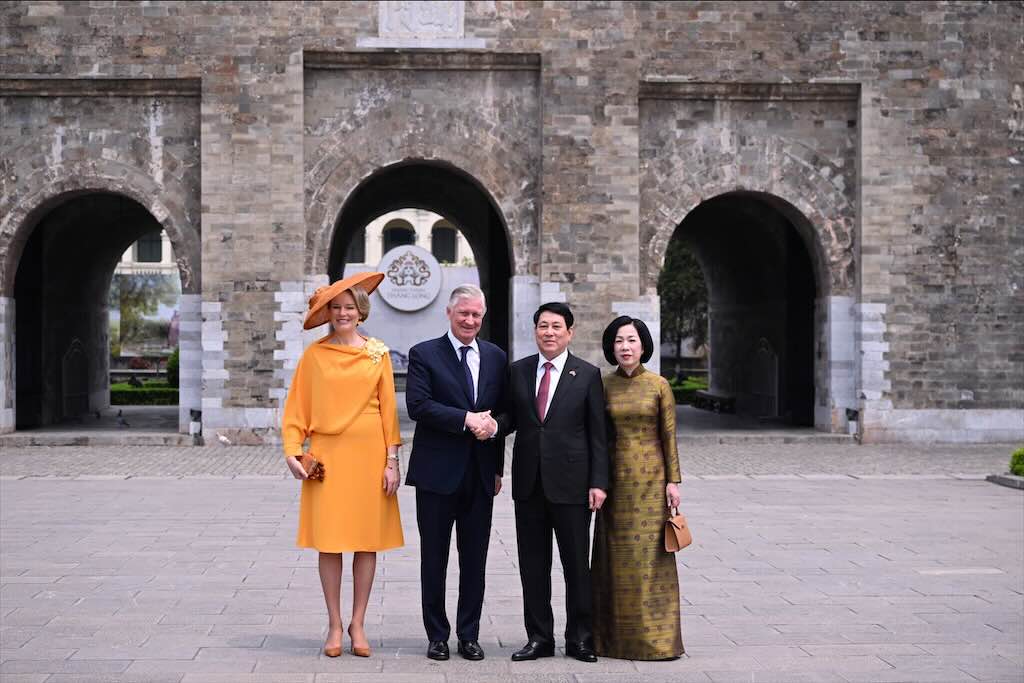
The visit to the Imperial Citadel of Thang Long by the two leaders aims to introduce to King Philippe and Queen Mathilde the history and culture of the beautiful country of Vietnam, as well as the hospitable people of Vietnam, thereby promoting people-to-people exchanges, creating a foundation for expanding cooperation to other extensive fields between the two countries.





